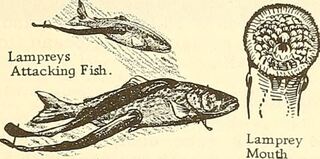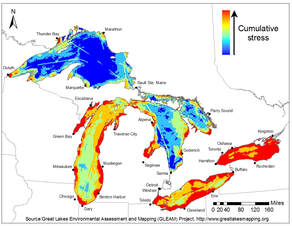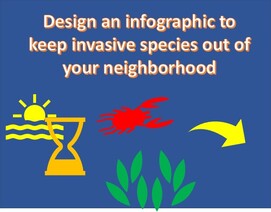Cross-Curricular LEsson Plans
New lesson plan ideas are welcome. See below for instructions on submitting.
All lesson plans may be downloaded and used FOR FREE!!!
All lesson plans may be downloaded and used FOR FREE!!!

Invasive Species Have Feelings, Too?
by Sara Forbing sforbing(at)carok12.org
Students begin, discussing a goldfish that has grown too big for its tank. After learning about the harm it could cause if released into the environment, students are asked to imagine themselves as an invasive species. After learning about role, audience, format, and tone (RAFT), students describe their life as an invasive species: where they come from and how they will cause harm to the native organisms. Grade 4.
by Sara Forbing sforbing(at)carok12.org
Students begin, discussing a goldfish that has grown too big for its tank. After learning about the harm it could cause if released into the environment, students are asked to imagine themselves as an invasive species. After learning about role, audience, format, and tone (RAFT), students describe their life as an invasive species: where they come from and how they will cause harm to the native organisms. Grade 4.

Something's Fishy in the History of the Great Lakes
by Katie Larson, Alliance for the Great Lakes
Students work in groups to examine the history of the Great Lakes fishery from pre-colonial times until the present. They categorize the events of the time period, including the arrival and impacts of invasive species during the time period, and then present the information to the class, using discussion and diagrams to synthesize information and come to a historical understanding of the Great Lakes fishery. Designed for Grade 6-8 Social Studies.
by Katie Larson, Alliance for the Great Lakes
Students work in groups to examine the history of the Great Lakes fishery from pre-colonial times until the present. They categorize the events of the time period, including the arrival and impacts of invasive species during the time period, and then present the information to the class, using discussion and diagrams to synthesize information and come to a historical understanding of the Great Lakes fishery. Designed for Grade 6-8 Social Studies.

A World of Invasive Species in Michigan
by Tina Williams [email protected]
Students will learn what invasive species are, how invasive species harm ecosystems, where they come from and circumstances as to how they are introduced to new locations, and preventive measures to slow down their invasion. A large part of the lesson is reading and interpreting the data on maps, showing that invasive species are a world-wide problem, not just a problem in Michigan. Designed for Grade 5 Social Studies and Biology--cross-curricular.
by Tina Williams [email protected]
Students will learn what invasive species are, how invasive species harm ecosystems, where they come from and circumstances as to how they are introduced to new locations, and preventive measures to slow down their invasion. A large part of the lesson is reading and interpreting the data on maps, showing that invasive species are a world-wide problem, not just a problem in Michigan. Designed for Grade 5 Social Studies and Biology--cross-curricular.

Stop Aquatic Invaders in our Neighborhood
by Erica Sprague Meridian Junior High School
Students will be challenged with helping a homeowners association to develop and implement a plan for keeping aquatic invasive species out of a local lake. The lesson guides students through the challenge of helping people understand what invasive species are and how to identify them, how to create guidelines for keeping them out of the lake and what to do if an invasive species is spotted. This lesson will focus on three different invasive species. A similar project to assist keeping invasive species out of vacant lots or community gardens could be based on food webs of terrestrial organisms. Designed for Grade 6 - 8 Science and cross-curricular with Social Studies and ELA.
by Erica Sprague Meridian Junior High School
Students will be challenged with helping a homeowners association to develop and implement a plan for keeping aquatic invasive species out of a local lake. The lesson guides students through the challenge of helping people understand what invasive species are and how to identify them, how to create guidelines for keeping them out of the lake and what to do if an invasive species is spotted. This lesson will focus on three different invasive species. A similar project to assist keeping invasive species out of vacant lots or community gardens could be based on food webs of terrestrial organisms. Designed for Grade 6 - 8 Science and cross-curricular with Social Studies and ELA.

New lesson plan ideas are welcome and will be uploaded as they are received and approved.
Instructions for submitting lesson plans for:
About invasive species,
About science and science careers
For information about submitting new lesson plans, please contact jchadde(at)mtu.edu or jeffram(at)wayne.edu
Lesson plan ideas from other web sites:
From Pennsylvania Sea Grant: 10 lesson plans about interactions of invasive species, biodiversity, and climate change
Creation of the above page of educational resources was funded in part by the Michigan Invasive Species Grant Program through the Departments of Natural Resources, Environmental Quality, and Agricultural and Rural Development.
This material is also based upon work supported by the National Science Foundation under Grant No. 1614187.
Any opinions, findings, and conclusions or recommendations expressed in this material are those of the authors and do not necessarily reflect the views of the National Science Foundation.
Instructions for submitting lesson plans for:
About invasive species,
About science and science careers
For information about submitting new lesson plans, please contact jchadde(at)mtu.edu or jeffram(at)wayne.edu
Lesson plan ideas from other web sites:
From Pennsylvania Sea Grant: 10 lesson plans about interactions of invasive species, biodiversity, and climate change
Creation of the above page of educational resources was funded in part by the Michigan Invasive Species Grant Program through the Departments of Natural Resources, Environmental Quality, and Agricultural and Rural Development.
This material is also based upon work supported by the National Science Foundation under Grant No. 1614187.
Any opinions, findings, and conclusions or recommendations expressed in this material are those of the authors and do not necessarily reflect the views of the National Science Foundation.